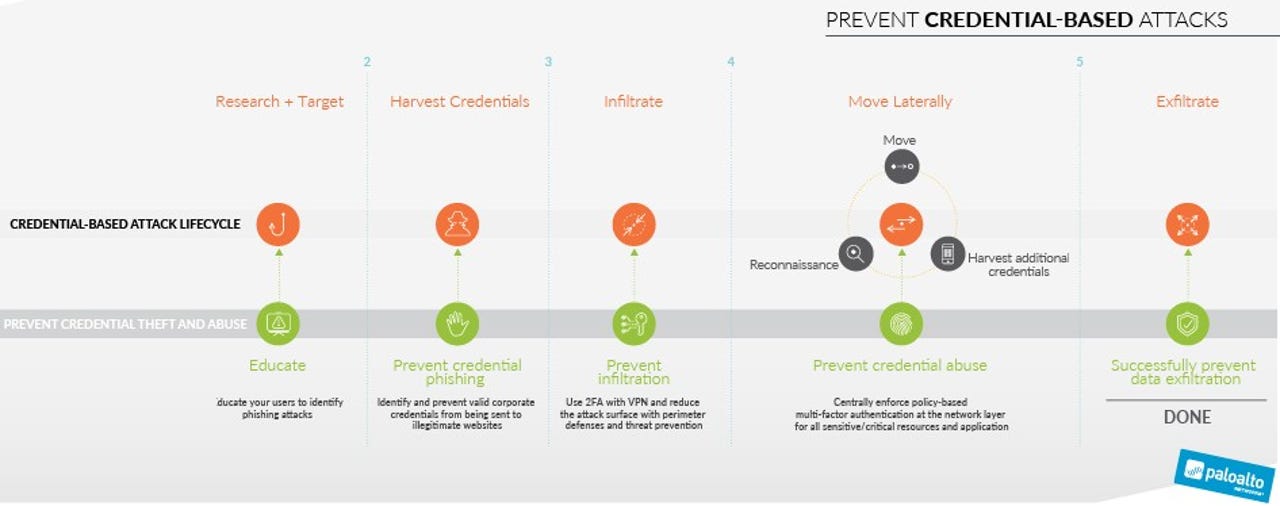Palo Alto Networks aims to thwart credential theft

Palo Alto Networks is aiming to thwart credential theft with the launch of its next-generation security platform.
The move, which comes amid a barrage of product announcements from the security vendor, is notable because it's looking to prevent the intrusions that typically give cyber attackers the keys to the enterprise network.
Once a password or credential theft is successful, cyber attackers can lurk on corporate networks for months if not years. Palo Alto is looking to automate defenses against credential phishing attacks, which are effective given that multi-factor authentication still isn't the default on many networks.

Here's the approaches deployed by Palo Alto to nix credential fraud:
- Automatic blocking of phishing sites via Palo Alto's WildFire analysis system.
- Preventing users from submitting credentials to phishing sites. Palo Alto firewalls can recognize enterprise credentials in outgoing enterprise traffic.
- Scaling multi-factor authentication within the firewall. Palo Alto will integrate with Okta, Ping Identity and Duo Security among others.
Tech Pro Research: IT leader's guide to the Dark Web | How risk analytics can help your organization plug security holes | Information security incident reporting policy
The credential protection comes as Palo Alto is increasingly competing with larger competitors such as Cisco in the security market as well as Check Point and Fortinet to name a few.
Although credential fraud and theft protection was the headliner, Palo Alto also rolled out a series of new features in its latest platform -- PAN-OS 8.0. PAN OS 8.0 includes 70 features including multiple hooks to better secure public and private cloud security. Notable points include:
- Automation of cloud security and integration with providers such as Amazon Web Services and Microsoft Azure.
- Real-time monitoring for software as a service tools such as Slack and support for global languages.
- Three new virtual firewall models -- VM-50, VM-500, and VM-700 -- to cover branch offices to data centers to the cloud.
The new virtual firewall models were also part of a broader hardware rollout that included appliances that cover multiple architectures.
Video: Could hackers use artificial intelligence to steal your data?